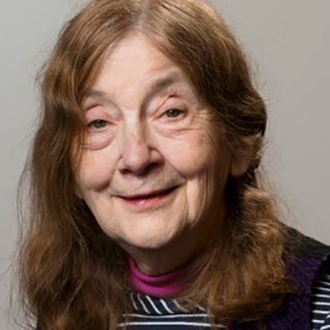Population and Climate Change
–
V499 Videoconference RmCNS Building
499 Van Buren St
Monterey, CA 93940 View in Campus Map
Free
Open to the Public

Climate scientists understand how the earth’s atmosphere, oceans and weather are changing and how to illustrate that with predictive models—but most models are missing a key element: people.
Dr. Eugenia Kalnay, a pioneer in atmospheric, environmental and weather modeling, will present on the coupled Human and Nature Dynamical Model (HANDY), arguing that there are critical two-way feedbacks missing from current climate models, namely people and their associated variables of inequality, consumption, and population. The HANDY model demonstrates that an egalitarian society can reach equilibrium with nature, whereas the presence of either large inequality or excessive use of natural resources both lead to societal collapse.
The Human System now dominates the Earth System, and since 1950 the population and GDP per capita have been both growing at about 2% per year, indicating that the total use of Earth resources is doubling every 20 years, a clearly unsustainable path. Dr. Kalnay will point out that the Intergovernmental Panel on Climate Change Earth System models (and Integrated Assessment models) are not bi-directionally coupled with Human System. Without fully coupling the Earth and Human Systems it is not possible to model the positive and negative feedbacks and delays needed to represent climate change and sustainability, in the same way that without a fully coupled ocean-atmosphere model it is impossible to simulate El Niño, since it is the result of two-way feedbacks and delays between the ocean and the atmosphere. She will describe a prototype of a fully coupled Earth System model, including government policies.
The Human and Nature Dynamical Model (HANDY), developed by Dr. Kalnay and a University of Maryland-led international team of distinguished scientists, models two classes of people, Elites and Commoners, performing “thought experiments” on sustainability. As stated earlier, the model shows that an egalitarian society can reach equilibrium with nature, whereas the presence of either large inequality or excessive use of natural resources both lead to societal collapse, as has happened to many civilizations in the last 5000 years. Introducing non-renewable resources (fossil fuels) into the HANDY model results in an explosive population growth similar to that observed since the use of fossil fuels triggered the Industrial Revolution in the 1800’s and the Green Revolution in the 1950’s. Join Dr. Kalnay, Distinguished Professor, pioneer and thought leader, for this engaging discussion.
Free and open to the public.
Part of the Hayward Sustainability Speaker Series and Social and Environmental Justice Speaker Series, co-hosted by the Center for the Blue Economy.
About the Speaker
Prior to coming to the University of Maryland, Dr. Kalnay was Branch Head at NASA Goddard, and later the Director of the Environmental Modeling Center (EMC) of the National Centers for Environmental Prediction (NCEP, formerly NMC), National Weather Service (NWS) from 1987 to 1997. During those ten years there were major improvements in the NWS models’ forecast skill. Many successful projects such as the 60+years NCEP/NCAR Reanalysis (article cited over 20,000 times), seasonal and inter-annual dynamical predictions, the first operational ensemble forecasting, 3-D and 4-D variational Data Assimilation, advanced quality control, and coastal ocean forecasting. Under Dr. Kalnay, EMC became a pioneer in both the fundamental science and the practical applications of numerical weather prediction.
Current research interests of Dr. Kalnay are in numerical weather prediction, data assimilation, predictability and ensemble forecasting, coupled ocean-atmosphere modeling, coupled human-earth systems, climate change and sustainability. Zoltan Toth and Eugenia Kalnay introduced the breeding method for ensemble forecasting. She is also the author (with Ross Hoffman and Wesley Ebisuzaki) of other widely used ensemble methods known as Lagged Averaged Forecasting and Scaled LAF. Her book, Atmospheric Modeling, Data Assimilation and Predictability (Cambridge University Press, 2003) has been published in Chinese (2005) and in Korean (2012). A second edition is in preparation. She has received numerous awards, including the 2009 IMO Prize, the top prize of the World Meteorological Organization, and has a member of the UN Scientific Advisory Board, the NOAA Scientific Advisory Board and other Scientific Boards.
Related Link
http://www.atmos.umd.edu/~ekalnay/
Lecture Location: CNS V499
The Center for Non-Proliferation Studies building is located on the corner of Jefferson Street and Van Buren Street, at 499 Van Buren Street, Monterey, CA 93940. Enter from the main Van Buren entrance, and walk down the hallway all the way to the end—room V499VC is directly ahead, last room at the end of the hallway. View the campus map.
Parking
Parking is available in any Middlebury Institute campus lot after 5 p.m., or on the street (time limits on surrounding streets end at 6 p.m.)
Questions
Contact Rachel Christopherson at the Center for the Blue Economy at cbe@miis.edu or (831) 647-6615 ext. 1.
